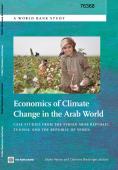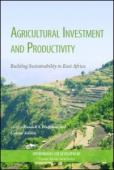How can Africa’s vast natural resources create more wealth for the African people in a more resource-efficient and beneficial manner? What are the pathways to industrial growth which can create greater employment, produce higher outputs with lower inputs, and enhance competitiveness for African economies? How can vulnerabilities created by climate change, desertification and external shocks in the world economy be tempered, if not eliminated? What challenges will African countries face in the transition to a green economy and how could such challenges be overcome? What experiences within and outside Africa offer lessons that could be built upon?
These are questions that this report seeks to address. The report is meant to stimulate further discussion, aiming to contribute to articulating African views and perspectives on the theme of green economy in the context of sustainable development and poverty eradication for the United Nations Conference on Sustainable Development (Rio+20) in 2012.


Many protected areas are not successfully conserving biodiversity, often despite adequate management within their borders. Changes in land use outside protected areas can alter ecological function inside protected areas and result in biodiversity loss given that protected areas are almost always parts of larger ecosystems. Economic incentives are seen as one of the most promising avenues to influence conservation goals. This paper deals with enabling these in the now commonly accepted notion of bioregional landscape management. It suggests a holistic framework to help understand where and how such incentives may function. It then discusses a range of desired incentives, and relate as many of these as possible to potential underlying institutional changes. Without going into country-specific details, several southern African examples are used, all the while relating both principles and examples to bioregionalism. We conclude that incentives for bioregional conservation in southern Africa are far more likely to succeed if key institutions can be introduced.

This book provides a deep and systematic look at the opportunities for and constraints to investments in sustainable agriculture in East Africa, offering important insights into what works and how to analyse agricultural investments in one of the poorest regions of the world.
The book critically examines the reasons behind East Africa's stagnant agricultural productivity over the past forty-five years, using the primary lens of investments in fertilisers, seeds, and sustainable land management technologies. These investment have a tremendous impact on production volume, ultimately affecting the income of millions of families throughout the region.
This book provides case studies on Kenya and Ethiopia.
